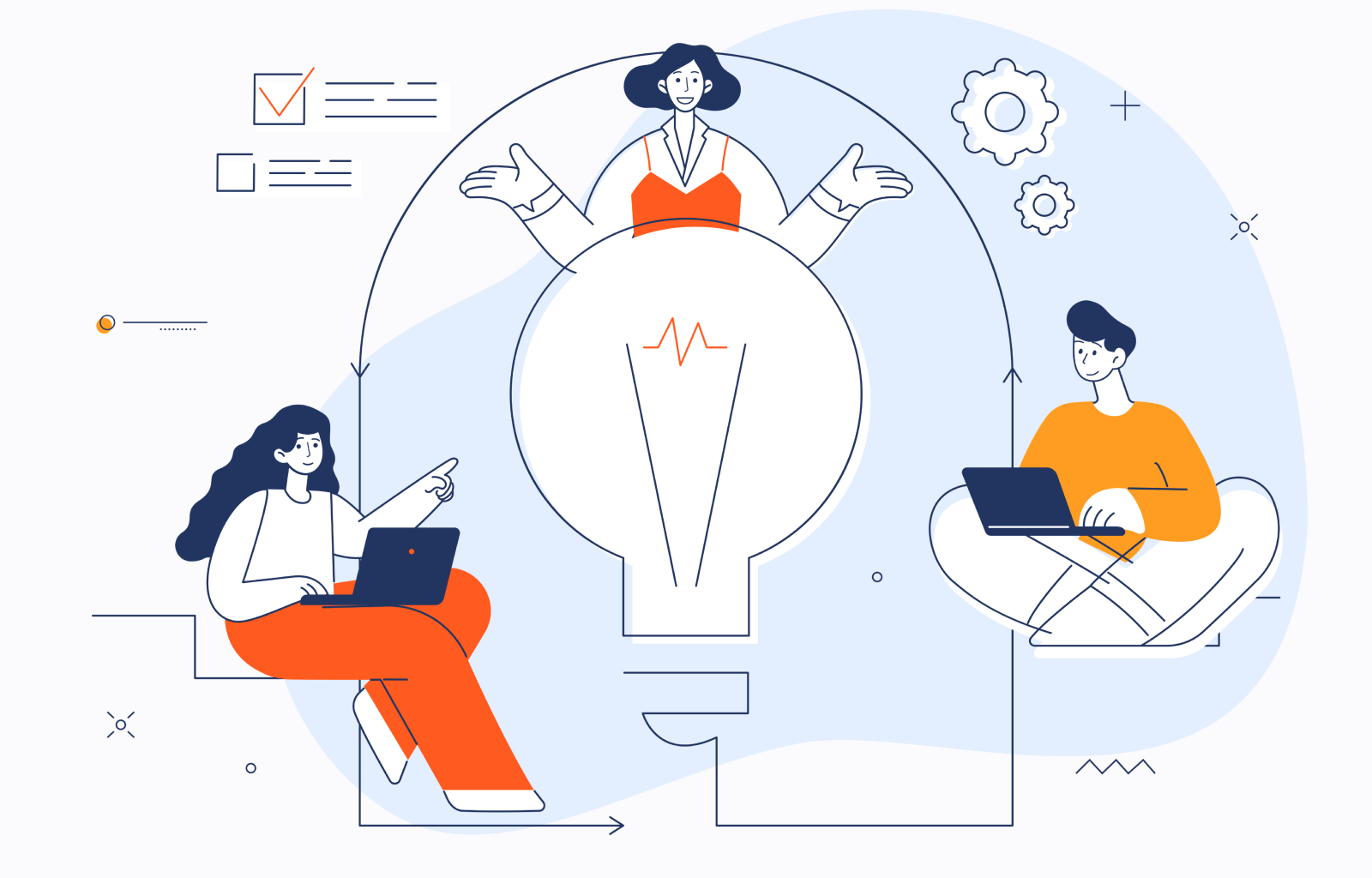Signs Your Startup Needs Its First AI Engineers

Most startups don’t hire AI engineers from the outset. And that’s normal. In the beginning, they aim to deliver fast. But as more data accumulates and competitors close in, the lack of AI talent slows growth and makes it harder to stay ahead.
The question is: when to hire AI engineers? Bring them on too early, and you’ll waste precious budget on a role you don’t need yet. Wait too long, and you risk missing opportunities. This article will help you spot the five signs that mean it’s time.
Sign 1: You’re Collecting More Data Than You Can Analyze Manually
When you’re just starting, you can easily manage your data with spreadsheets and manual reporting tools. But that changes completely when your processes scale. The sheer volume of information you have to deal with becomes overwhelming.
In this scenario, manual analysis is no longer practical. Because by the time you analyze a thing, the opportunity to act may already be gone.
Recruiting AI software engineers, though, makes a real difference. Intelligent systems they implement can:
- Sift through massive datasets in real time.
- Find patterns and trends.
- Suggest next steps or specific actions.
Example:
A D2C brand was selling across several online marketplaces, each providing sales data in its own format. The team spent days merging reports just to figure out which products were trending, only to realize demand had already shifted.
Once AI entered the stage, the data was pulled automatically and updated live, giving the team clear signals on what to restock before items sold out.
Sign 2: Your Rules-Based Automation Is Hitting Its Limits
Most startups begin with simple automation: “if this happens, then do that.” It’s quick to set up and works well when processes are still straightforward.
But when operations get more complicated, these fixed rules are no longer enough. They cannot adapt to dynamic, real-world variables, such as supply chain delays, unexpected resource shortages, or sudden demand spikes.
Hiring an AI team for startups is a must here. These experts can implement solutions that learn from past data and adapt on the fly, instead of relying on rigid instructions.
Example:
A manufacturing startup’s early system routed orders to production lines based only on product type. At low volumes, this was fine. But when urgent orders arrived while certain materials were delayed, some lines ended up overloaded while others sat idle. The result? Delays.
After bringing in AI, the system could instantly reassign work based on machine availability and material supply, helping the company stay on schedule.
Sign 3: Competitors Are Launching AI-Powered Features
The moment your competitor rolls out an AI-powered feature, it quickly becomes the new standard in the industry. If your product can’t keep pace with these latest customer expectations, it risks looking outdated.
By partnering with an AI development team, you can launch comparable features faster or even build something smarter that raises the bar again.
Example:
Consider a mid-sized logistics platform. Their competitor released real-time delivery predictions powered by traffic, weather, and driver location. Almost immediately, customers began expecting that level of accuracy from everyone in the space.
The logistics startup quickly hired AI engineers, who not only built a similar prediction tool but also layered in warehouse processing data. This made their estimates even more precise than the competitor’s.
Sign 4: Customer Experience Requires Real-Time Decisions
Some industries depend on instant decisions. Even the slightest delay can mean a lost sale, a frustrated review, or a customer who never comes back.
However, when you build AI capabilities into your product, you can act fast, in real time.
Example:
Let’s take online grocery delivery as an illustration. The system had to confirm item availability every time a customer added a product to their cart. Since no real-time capabilities were included, shoppers would complete their orders only to discover that some products were out of stock. This led to cancellations and general customer frustration.
After AI was implemented, the system could pull live data from inventory, suppliers, and orders to show only what was actually available for delivery.
Sign 5: You Have a High-Value Process That Could Be Predicted or Personalized
Not every workflow in a modern startup needs AI solutions. But when you look at your company, are there any processes that directly impact your revenue, repeat business, or customer satisfaction? If so, even basic AI capabilities can pay off in a big way.
When you partner with a software development company that can help with AI talent for startups, you can either build AI-powered prediction or personalization systems. Or both. These use historical and real-time data to forecast outcomes or personalize each customer interaction.
Example:
Take the case of a hotel booking platform. They wanted to drive more direct reservations, rather than losing customers to third-party sites.
By analyzing past booking patterns, seasonal demand, and user behavior, AI identified which visitors were most likely to book soon. Those users were then offered personalized perks, such as a free breakfast or late checkout. This helped increase conversion rates without resorting to margin-cutting discounts.
Sign 5: You Have a High-Value Process That Could Be Predicted or Personalized
So, you’ve noticed the signs. Perhaps, realizing your startup is ready for AI is exciting — almost as exciting as closing a fresh funding round. But just like fundraising, what you do next matters a lot. Here are the steps:
- Pinpoint the high-impact areas. Identify areas AI could help with. Those may include anything from reducing delays to improving forecasting and enabling personalization.
- Define the project scope. Clearly outline the project. What data will the AI need to analyze? What is the specific workflow it will impact? What are your expected outcomes? Answering these will help you get started.
- Prepare the data. Before the actual development process begins, make sure your data is well-organized and clean. Remember the “garbage in, garbage out” rule.
- Decide on hiring vs. partnering. Weigh the pros and cons of building an AI development team in-house versus working with an external partner. Consider budget, project execution speed, and the complexity of your needs.
- Begin with one targeted project. Test AI capabilities on just one use case to validate your approach. Measure the results. Make sure it brings sufficient ROI before scaling AI across your entire startup.
Having such a thoughtful plan = reduced risk of wasted investment and a much faster path to real, measurable results.
Conclusion
Whenever you figure out that your startup needs to hire AI engineers, keep one thing in mind. You’re not blindly following a trend. You’re doing what’s best for your startup, where manual processes, rigid rules, and slow analysis just can’t keep up with your growth anymore.
In case you’ve spotted the signs in our startup AI hiring guide, want expert advice on AI implementation, or need an AI development team, reach out to Integrio Systems. With over 200 projects delivered and more than 12 years of implementing AI solutions, we know what it takes to build the right foundation for your startup’s next stage of growth.
Contact us

